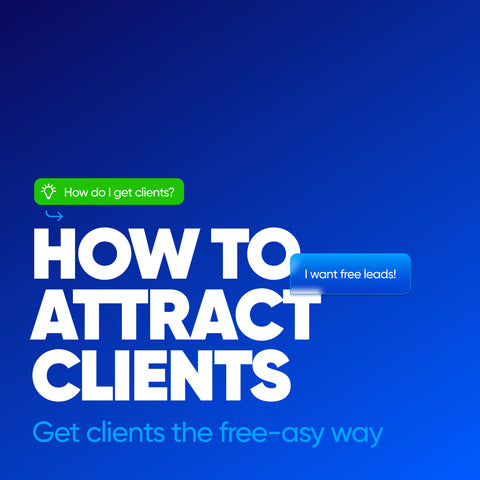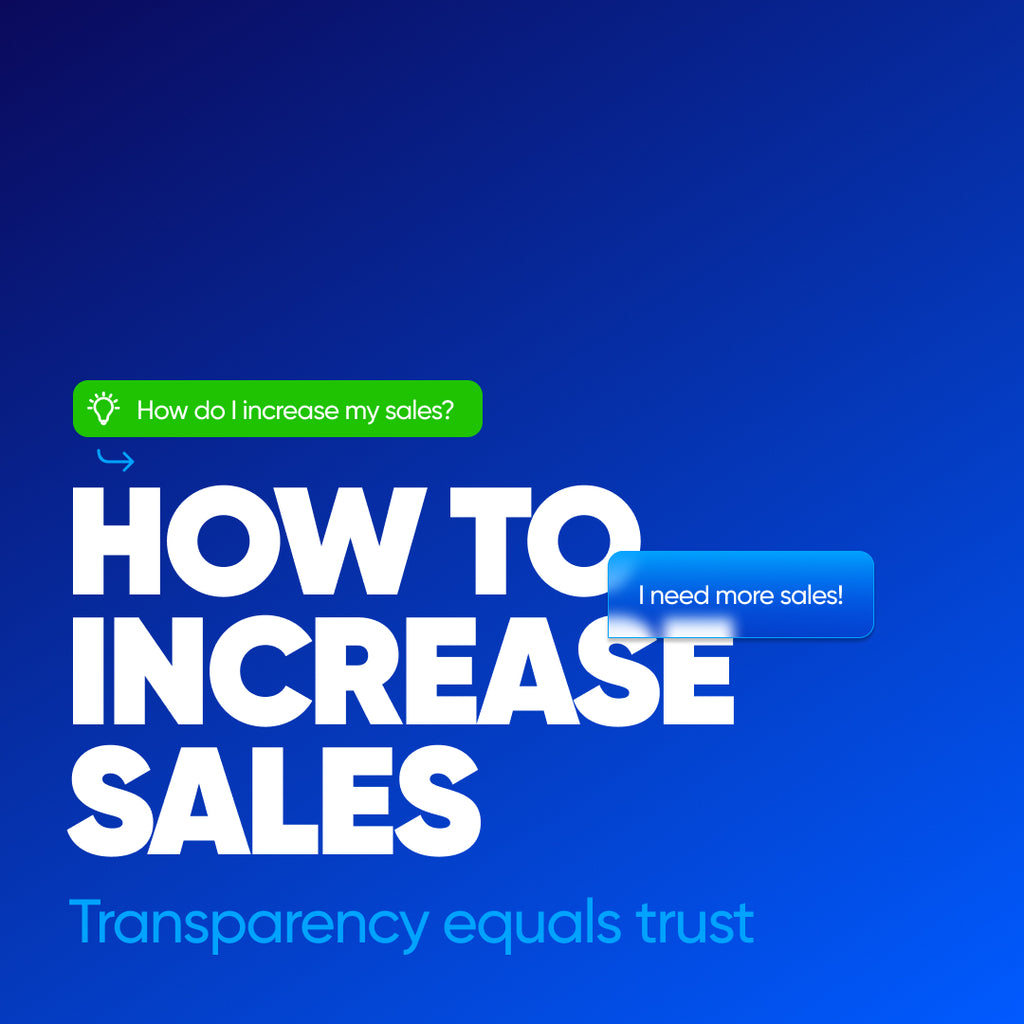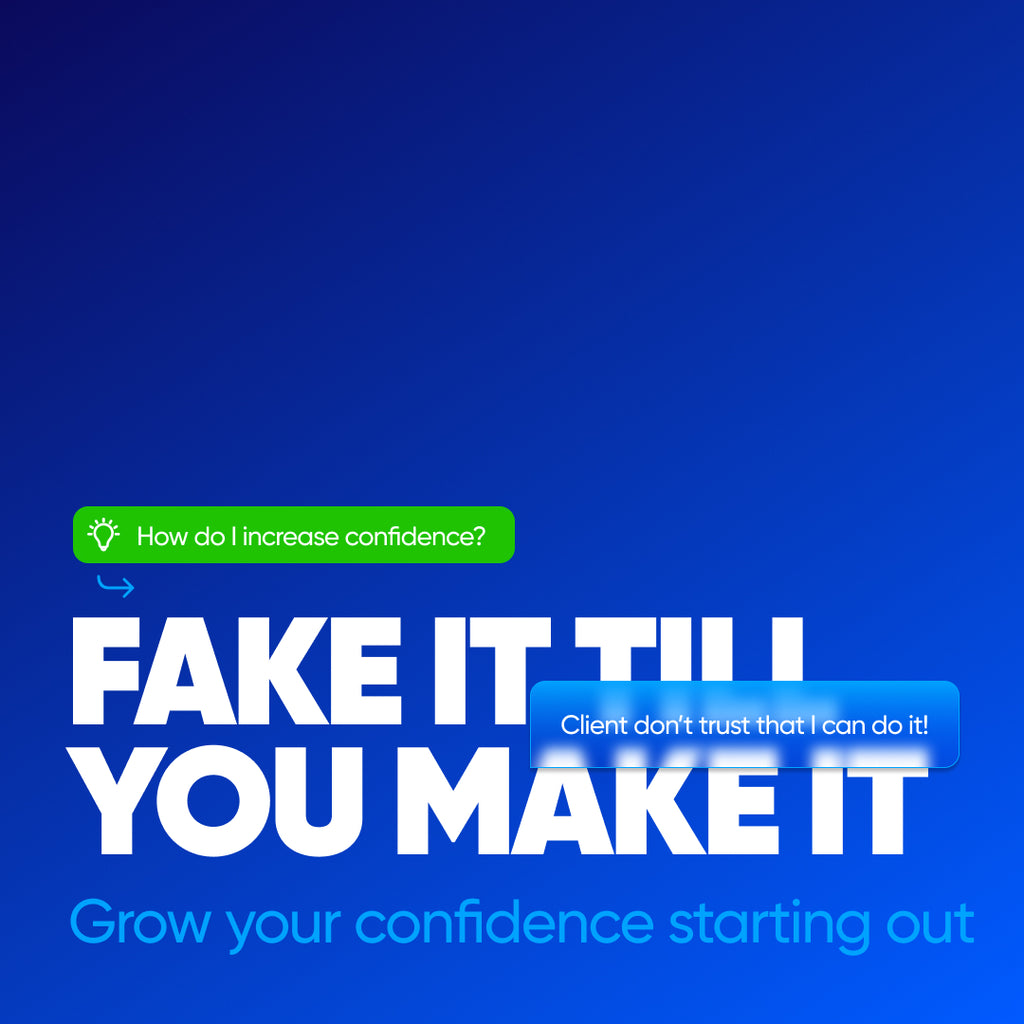Organic content marketing involves creating and publishing content that naturally attracts visitors and turns them into clients.
It doesn’t feel like an ad because, unlike paid ads, organic content lets people come to your brand when they feel like doing so. This approach builds trust and helps increase brand awareness, positioning you as an expert in the chosen niche.
Identifying Your Target Audience
Identifying your target audience is crucial for creating effective organic marketing strategies that attract high-end clients. You need to understand their needs, preferences, and behaviors to do this. Here are some steps to help you identify your target audience:
-
Conduct Market Research: Start by gathering data about your existing customers. Look into their demographics, interests, and pain points. This information will give you a clearer picture of who your current clients are and what they value.
-
Analyze Your Competitors: Research your competitors’ target audiences. Identify gaps in the market that your business can fill. Understanding who your competitors are targeting can help you find opportunities to differentiate your brand and attract high-end clients.
-
Create Buyer Personas: Develop detailed profiles of your ideal customers. Include their goals, challenges, and motivations. Buyer personas help you visualize your target audience and tailor your content to meet their specific needs.
-
Use Social Media Listening: Monitor social media conversations related to your industry. Identify patterns and trends that can help you understand your target audience better. Social media listening can provide real-time insights into what your potential clients are talking about and what they care about.
By understanding your target audience, you can create organic marketing content that resonates with them and attracts high-end clients to your business.
Crafting Messages That Resonate
Crafting messages that resonate with your target audience is essential for attracting high-end clients through organic marketing. Here are some tips to help you create effective messages:
-
Use Storytelling: Tell stories that highlight the benefits and value of your products or services. Stories are a powerful way to connect with your audience emotionally and make your brand more memorable.
-
Focus on the Customer: Emphasize how your products or services can solve the customer’s problems or meet their needs. Make your audience the story's hero and show how your brand can help them achieve their goals.
-
Use Emotional Language: Use language that evokes emotions and creates a connection with your target audience. Emotional language can make your messages more compelling and persuasive.
-
Highlight Your Unique Selling Proposition (USP): Clearly communicate what sets your business apart. Your USP should be a central message theme, showcasing the unique value you offer to high-end clients.
By crafting messages that resonate with your target audience, you can create organic marketing content that attracts high-end clients and drives business growth.
Leveraging Social Media for Organic Marketing and Brand Growth
From the very start of my content making journey, I realized that social media is a sort of backbone on which any strategy potentially lays its success. But just being present on every other platform is simply not enough. All the magic happens when you are present at the right place, speaking to and engaging the right audience.
Platform Selection
Now, moving to the selection of the platform.
LinkedIn is a goldmine if one operates a B2B business. This is a site where decision-makers are spending time, and this too is the place where you establish yourself as a thought leader.
The way to set yourself apart from others is by sharing great insights, trends in your industry, and client success stories on a regular basis.
LinkedIn has features such as LinkedIn Pulse, in which one can publish long-form articles to show your expertise.
If, however, your brand happens to be more visually driven - say, you're into fashion or design, or even lifestyle-then Instagram should wear the winner's crown. In this case, it is all about visual appeal.
Great images, fantastic stories, and short-form videos could all align to create one seamless brand identity that will finally connect with an intended audience.
Remember, though, that Instagram isn't all about posting pretty pictures; rather, it's about telling a story through pictures that convey and reflect your brand's values and mission.
TikTok
TikTok might sound like something reserved for the young, but it’s a rising juggernaut for brand awareness. If one presents entertaining and informative content, it can be the place to be for all.
Indeed, TikTok’s algorithm does favor creativity and regularity. Hence, it is just the perfect platform for brands that want to reach a greater audience with educational or entertaining content.
Creating Relatable Content
Having identified the right platforms, you must create relevant content for your audience. Incorporating social media posts is essential for sustaining customer engagement and driving organic traffic without relying on paid advertising.
For example, on LinkedIn, this would be thought leadership content. Let your audience know from here your unique insights into industry trends, tell them where solutions to common problems are, and use actionable pieces of advice to light the way ahead. Such posts won’t just engage your audience but will also position you as an authority in their eyes.
This might be a visual Instagram narrative that tells your brand's story. Think about how to use images, videos, and stories to reveal your brand's personality. Other ways to humanize your brand and relate it to people include behind-the-scenes content, user-generated content, and collaborations with influencers.
TikTok is all about short-form video content. It’s ideal for quick content development that might show your brand’s fun side. Tutorials, demos of products, or even challenges can engage a younger audience in your brand and enhance visibility.
Demonstrate Your Expertise through Video Content
Video content is the most powerful tool in your organic content arsenal. It enables you to engage with your target audience on a personal level and establishes your expertise in an entertaining yet informative way.
Psychology behind Video Content
Let's dive in and get an idea of why video content works in the first place.
-
First and foremost, people are visual creatures. The brain processes whatever is visible a lot faster compared to text; it retains more of that information, too. Videos have the best of both worlds: visual and audio. That is most likely the reason why videos keep engagement better than other forms of content.
-
Second, videos build trust. When potential clients see you in action—through tutorials, behind-the-scenes, or client testimonials—it's a lot easier to believe you can actually deliver on what you promise. Video content allows you to show and tell about your work, to explain complex concepts, and to show the value of the products or services a company sells in a real and tangible way.
-
Lastly, search engines love video content. You can seriously improve your SEO to attract more organic traffic to your site by adding videos to your site. Videos improve the time spent on your site by visitors and reduce bounce rates while offering extra keyword optimization opportunities.
Creating Effective Video Content
So, how do you create such video content that can hit the right spots with your premium clientele?
Identify the type of video that resonates the most with your target audience. Suppose you’re in tech; these might be tutorial videos on how to use your product. If you’re in a service-based business, share client testimonials or case studies to indicate results you’ve been able to get for others.
Next, focus on the quality of production. You don’t have to spend a Hollywood budget, but you do need to invest in good lighting, sound, and editing. Your video content is a reflection of your brand, and it is worth taking the time to make your videos look professional. Providing exceptional service in your video production can also foster long-term relationships and lead to repeat business and referrals.
Finally, don’t forget to optimize your videos for SEO. Use key phrases relevant to your video titles, descriptions, and tags. Include transcripts for accessibility, adding SEO benefits too. And don’t forget to cross-promote your videos across your social media platforms and website.
The Importance of Branding Consistency
Consistency in branding is a must to communicate with high-paying clients. A consistent brand theme depicted through your collaterals provide brand recall, along with branding consistency.
Why Consistency Matters
Let's break down why consistency is so important. Consistency in brands helps build recognition. If your audience continues to see the same colors, fonts, tone of voice, and messaging across all of your content, it becomes pretty cohesive. This makes it memorable, and easily recognizable, even without using your logo.
Consistency is what builds trust. Imagine coming across a brand that has an inconsistent online presence where the website is different from the social media, and the messaging across different platforms is also different. Chances are it would stop you in your tracks and make you question the professionalism and integrity of that brand.
A consistent brand gives a feeling of reliability and professionalism both of which are essential components in building trust with high-end clients.
Finally, consistency helps keep your messaging focused. It ensures all of your content is proper and well represents what your brand is all about, speaking precisely to the right audience. This will attract those clients that are the right fit and will share similar values with you, where they are willing to invest in what you have to offer.
How to Maintain Consistency
First, create a brand style guide to keep everything consistent. This should cover everything - from the purpose and values of your brand, right through to specifics like color schemes, fonts, and tone of voice. After that, everyone creating content for the brand should follow the guideline.
Audit your existing content. Take a hard look at your website and all of your social media channels and accounts for inconsistencies. Include testimonials and reviews from previous clients to enhance credibility. Make sure you make sure that your content is tweaked to fit your brand’s style guide.
Finally, plan your content in advance. A content calendar keeps the fire going by ensuring that everything posted is in concert with the goals of your brand and key messaging. It also helps in planning out seasonal content and campaigns, ensuring everything is on-brand.
Engage Your Target Audience with Animation
Animation, be it through animated explainer videos, gifs, or motion graphic video content, can make an audience more engaged and retain its aspects better.
Benefits of Using Animations
Indeed, animations are not just attractive but they also effectively represent complex information. Social media marketing can leverage animations to generate and nurture leads, strengthen relationships, and enhance brand awareness across various platforms like LinkedIn, Instagram, and TikTok. For example, an animated explainer video can explain such a complicated process in a row using simple and easy-to-follow steps. In this way, it will be good for making your content accessible and engaging for the audience.
The other added advantage is that animations get remembered more than static content. The very essence of movement, color and audio together creates a multisensory experience which your viewers can’t forget soon after viewing your animation. Now imagine how beneficial this has become in today’s competitive markets, where the key aim is to be outstanding.
They will go a long way in adding value to your brand and making it stand out among other competing brands. Not many employ animations, and those who do can easily differentiate themselves and seem quite innovative. By using animations and incorporating that into your content strategy, your brand can be an industry leader.
Keeping Your Audience Focused with Effective Captions
The most undervalued aspect of video content includes placing captions. Your captions make the video accessible, as well as keeping your audience focused.
Why Captions Matter
Now, let's discuss why captions are important.
First of all, they make your content accessible to a wider audience that could include people with some sort of hearing impairment or generally those who just like videos without sound. This is very crucial, especially when you're out on a social platform where videos auto-play without sound.
With the added clarity of the message, captioned videos also tend to be much more engaging. Captions, therefore, will be used in holding the attention of a viewer for a longer period of time. This increased engagement, in reality, may result in more conversions-from leads to customers-and hence captions can be considered one of the most effective methods for attracting those premium clients.
Lastly, captions can give that added SEO boost. Search engines are able to crawl through captions for keywords, which will go a long way in enhancing your video's search rankings. This means greater visibility for your content and more opportunities to attract high-end clients.
Creating Value through Informative yet Entertaining Content
Any organic marketing efforts that purport to be effective must start with value as the core. If you want high-paying clients, the content will have to provide something of genuine value. That may be educational, entertaining, or both. Additionally, leveraging word of mouth marketing can significantly enhance your organic growth by encouraging customer referrals and building credibility.
Said otherwise, educational material remains one of the effective ways through which you can add value to your audience. This kind of content would hint to your audience that you are not just selling a product or service; you are actually solving their problems.
Of course, educational content is necessary, but entertaining content is what makes your audience stick. It can range from the behind-the-scenes, to engaging quizzes, and even light-hearted content that shows off your brand’s personality.
Entertaining content makes your brand more relatable and human; it holds your audience’s attention, thus making them come back for more, hence increasing their chances of becoming clients.
Establishing Authority Through Thought Leadership
One of the best ways to attract premium clients is by building yourself up as an influencer in your industry. Thought leadership today is so much more than just sharing expertise; it's all about providing insights, solutions, and ideas relevant to the audience.
Building Your Thought Leadership Platform
Building your thought leadership requires you to start building a platform that resonates with your target market. This can take many forms, but most often begins with a blog, podcast, or YouTube channel-or often combinations of the above. The key is in the production of high-quality content on a regular basis that creates value for the audience.
Engage Your Audience
Thought leadership is a very engaging process. Let your audience participate in your content through questions, opinions, and response to comments. That way, you will be building a community besides reinforcing your credibility as a thought leader.
Amplify Your Reach to Increase Brand Awareness
Once you achieve the status of a thought leader, seek opportunities to extend your reach further. It may be through guest blogging in reputed publications, speaking at industry conferences, participating in webinars, and attending panel discussions.
Pricing Strategy for High-Value Services
Pricing high-value services requires a strategic approach that takes into account the value you provide to your clients. Here are some tips to help you develop a pricing strategy for your high-value services:
-
Understand Your Costs: Calculate the costs of delivering your services, including time, materials, and overheads. Knowing your costs is the first step in setting a price that ensures profitability.
-
Research the Market: Research your competitors and understand the pricing landscape for your services. This will help you position your pricing competitively while ensuring it reflects the value you provide.
-
Focus on Value: Emphasize the value you provide to your clients, rather than just the cost of your services. High-end clients are willing to pay a premium for services that deliver exceptional value and results.
-
Use Tiered Pricing: Offer different pricing tiers to accommodate different levels of service and value. Tiered pricing allows you to cater to a broader range of clients while still providing premium options for those willing to pay more.
-
Be Transparent: Clearly communicate your pricing and the value you provide to your clients. Transparency builds trust and helps potential clients understand why your services are worth the investment.
By developing a pricing strategy that reflects the value you provide, you can attract high-end clients who are willing to pay for premium services.
Takeaway
Attracting premium clients through an organic marketing strategy will always be a long game. These take a thought-out strategy, relentless effort, and understanding of your audience.
If you leverage social media, show up on video as an expert, exhibit consistency, and have a firm idea of who your target audience is, you will attract the clients you have always wanted.
With time, these pay off in streams of high-paying clients who need what you are selling and want to pay the premium price you ask for it.

How to attract premium clients using organic content?




